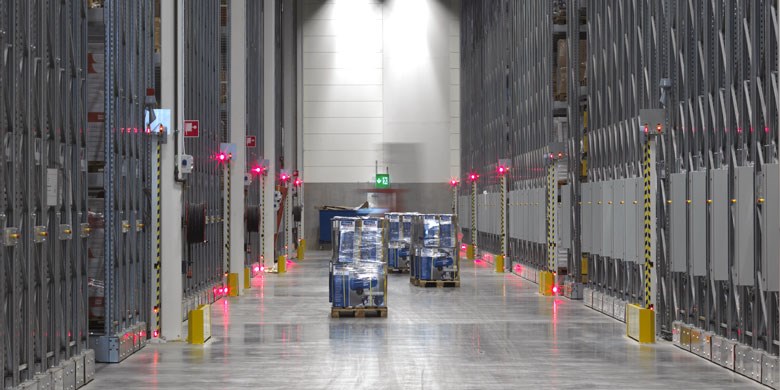Effective inventory management in cold storage warehouses is crucial for maintaining the quality and safety of perishable goods while optimizing operational efficiency. Proper inventory management minimizes waste, reduces costs, and ensures timely delivery of products. This article provides strategies and best practices to improve inventory management in cold storage warehouses.
- Implement Advanced Tracking Systems
1.1 Radio Frequency Identification (RFID)
- Real-Time Tracking: RFID technology allows for real-time tracking of inventory, providing accurate and up-to-date information on the location and status of goods.
- Automated Data Capture: RFID systems automate data capture, reducing manual errors and increasing inventory accuracy.
1.2 Barcoding
- Enhanced Visibility: Barcoding provides visibility into inventory levels and movements, helping to manage stock more efficiently.
- Simplified Processes: Barcodes simplify inventory processes such as receiving, picking, and shipping, ensuring quicker and more accurate operations.
- Optimize Warehouse Layout
2.1 Strategic Zoning
- Temperature Zones: Designate specific zones for different temperature requirements, such as frozen, chilled, and ambient, to maintain product integrity.
- High-Frequency Zones: Place high-turnover items in easily accessible locations to reduce handling time and improve efficiency.
2.2 Space Utilization
- Vertical Storage: Utilize vertical storage solutions to maximize available space and accommodate more inventory without expanding the warehouse footprint.
- Racking Systems: Implement flexible racking systems that can be adjusted based on inventory size and volume to optimize space utilization.
- Adopt Just-In-Time (JIT) Inventory
3.1 Demand Forecasting
- Accurate Predictions: Use advanced demand forecasting tools to predict inventory needs accurately, reducing the risk of overstocking or understocking.
- Historical Data Analysis: Analyze historical data to identify trends and seasonal variations, informing better inventory planning.
3.2 Supplier Coordination
- Reliable Partnerships: Establish reliable partnerships with suppliers to ensure timely delivery of goods, supporting JIT inventory practices.
- Order Synchronization: Synchronize orders with suppliers based on demand forecasts to minimize excess inventory and reduce storage costs.
- Enhance Inventory Visibility
4.1 Real-Time Monitoring
- IoT Sensors: Deploy IoT sensors to monitor temperature, humidity, and other critical parameters in real-time, ensuring optimal storage conditions.
- Centralized Dashboard: Use a centralized dashboard to provide a comprehensive view of inventory status and conditions, enabling proactive management.
4.2 Cloud-Based Systems
- Remote Access: Implement cloud-based inventory management systems that allow for remote access and real-time updates, enhancing visibility and control.
- Data Integration: Integrate inventory data with other business systems, such as ERP and WMS, to streamline operations and improve decision-making.
- Implement First-In, First-Out (FIFO) and First-Expired, First-Out (FEFO) Practices
5.1 FIFO for Stock Rotation
- Reduce Spoilage: Implement FIFO practices to ensure older stock is used first, reducing the risk of spoilage and waste.
- Efficient Picking: Design warehouse layouts and picking paths to facilitate FIFO, making it easier for staff to follow this practice.
5.2 FEFO for Perishables
- Expiration Management: Use FEFO practices for perishable goods, ensuring items with the nearest expiration dates are used first.
- Automated Alerts: Set up automated alerts for products nearing their expiration dates, allowing for timely action to prevent waste.
- Leverage Automation and Robotics
6.1 Automated Storage and Retrieval Systems (AS/RS)
- Increased Efficiency: AS/RS can quickly and accurately handle inventory, reducing labor costs and improving throughput.
- Space Optimization: These systems optimize space utilization by efficiently managing vertical storage.
6.2 Robotics
- Precision Handling: Robots equipped with advanced sensors can handle goods with precision, reducing damage and improving accuracy.
- 24/7 Operations: Robotics enable continuous operations, increasing productivity and reducing downtime.
- Regular Audits and Cycle Counts
7.1 Scheduled Audits
- Inventory Accuracy: Conduct regular audits to verify inventory accuracy and identify discrepancies promptly.
- Process Improvement: Use audit findings to identify areas for process improvement and implement corrective actions.
7.2 Cycle Counting
- Ongoing Verification: Implement cycle counting to continuously verify inventory levels, ensuring ongoing accuracy without the need for complete physical counts.
- Focused Counts: Focus cycle counts on high-value or high-turnover items to maintain accuracy where it matters most.
- Employee Training and Engagement
8.1 Comprehensive Training
- Best Practices: Train employees on inventory management best practices, including the use of technology and adherence to FIFO/FEFO principles.
- Safety Protocols: Ensure staff are aware of safety protocols specific to cold storage environments to maintain both safety and efficiency.
8.2 Performance Metrics
- KPIs: Establish key performance indicators (KPIs) to measure inventory management performance and identify areas for improvement.
- Incentives: Implement incentive programs to encourage employees to follow best practices and achieve inventory management goals.
Improving inventory management in cold storage warehouses involves implementing advanced tracking systems, optimizing warehouse layouts, adopting just-in-time inventory practices, enhancing inventory visibility, and leveraging automation and robotics. Additionally, employing FIFO and FEFO practices, conducting regular audits and cycle counts, and providing comprehensive employee training are essential for maintaining inventory accuracy and operational efficiency. By adopting these strategies, cold storage warehouses can reduce waste, lower costs, and ensure the quality and safety of perishable goods, ultimately leading to a more efficient and sustainable supply chain.


 Dave McGowan has been a member of the WEL Family since May 1989. He is a husband and father of two children. Dave is also a U.S. Army veteran and served in Vietnam in 1971-1972, and he attended driving school soon after he was released from the military in 1974.
Dave McGowan has been a member of the WEL Family since May 1989. He is a husband and father of two children. Dave is also a U.S. Army veteran and served in Vietnam in 1971-1972, and he attended driving school soon after he was released from the military in 1974. During his career with WEL, Phil has worked as a driver, dispatcher, terminal manager and customer service manager. He says he always was a driver first, though non-driving jobs taught him financial management that helps him as an owner-operator.
During his career with WEL, Phil has worked as a driver, dispatcher, terminal manager and customer service manager. He says he always was a driver first, though non-driving jobs taught him financial management that helps him as an owner-operator.